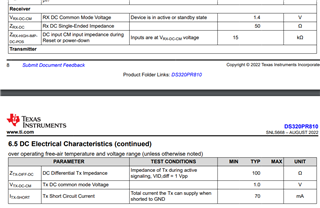The description in the Datasheet of our DS320PR810 is a single-ended 50 ohm termination, but the current PCIe impedance is differential 85 ohm. Please help customer to confirm what they should choose when doing circuit design.


This thread has been locked.
If you have a related question, please click the "Ask a related question" button in the top right corner. The newly created question will be automatically linked to this question.
The description in the Datasheet of our DS320PR810 is a single-ended 50 ohm termination, but the current PCIe impedance is differential 85 ohm. Please help customer to confirm what they should choose when doing circuit design.


Hi Fabio,
Typically if it is a chip to chip design then 100-ohm interface is used. However, in Add-In-Cards when signals go through 85-ohm impedance, 85-ohm controlled impedance is used. Therefor this depends on the customer application.
Regards, Nasser
Can the high-speed signal pins of DS320PR810 be swapped to use? Because the customer’s pin definitions is reversed compared to our chip.
Which means the actual "N" will be connected to our "P" pin. The actual "P“ will be connected to our "N".
Hi Nasser,
Thanks for your support.
The customer have another question.
Because our redriver will enlarge the useful signal, how about the noise in the input side?
Whether there is technology in our product which would depress the enlarge function to noise signal?
Could you pls share related material with me?
Thanks
Hi Fabio,
Our redriver does not distinguishes between noise and incoming signal. Therefor if there is noise within the signal bandwidth we will amplify as well. PCIe specifications limits the noise from the source signal. As long as source signal is within the PCIe limit, then noise addition by the redriver is within 100fs.
Regards,Nasser